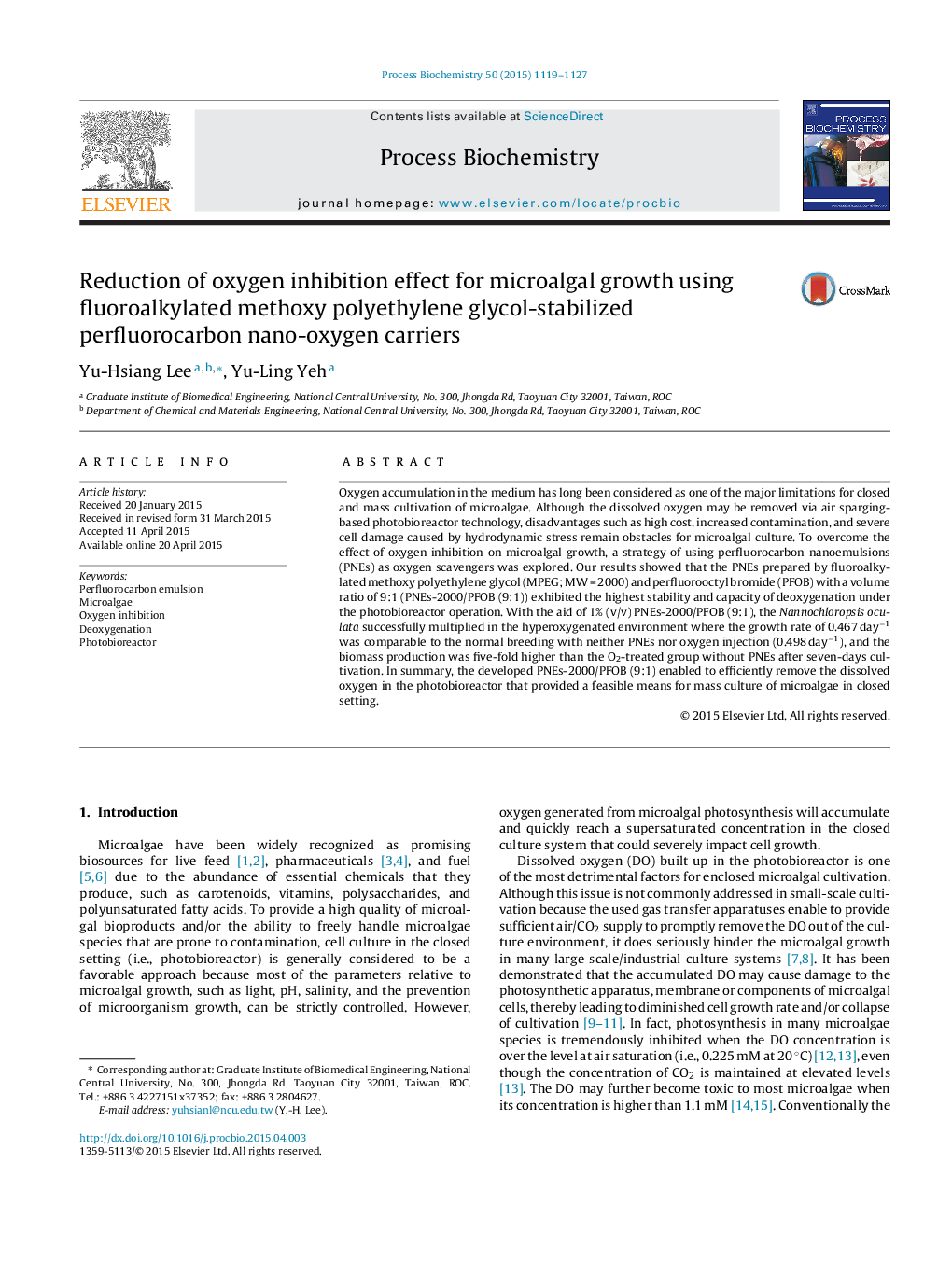| Article ID | Journal | Published Year | Pages | File Type |
|---|---|---|---|---|
| 34360 | Process Biochemistry | 2015 | 9 Pages |
•We fabricated, characterized, and optimized PFC nanoemulsions for deoxygenation.•The stability and deoxygenability of the PFC nanoemulsions under photobioreactor operation were evaluated.•The proliferation of O2-stressed microalgae was improved in the PFC nanoemulsions-aided photobioreactor.
Oxygen accumulation in the medium has long been considered as one of the major limitations for closed and mass cultivation of microalgae. Although the dissolved oxygen may be removed via air sparging-based photobioreactor technology, disadvantages such as high cost, increased contamination, and severe cell damage caused by hydrodynamic stress remain obstacles for microalgal culture. To overcome the effect of oxygen inhibition on microalgal growth, a strategy of using perfluorocarbon nanoemulsions (PNEs) as oxygen scavengers was explored. Our results showed that the PNEs prepared by fluoroalkylated methoxy polyethylene glycol (MPEG; MW = 2000) and perfluorooctyl bromide (PFOB) with a volume ratio of 9:1 (PNEs-2000/PFOB (9:1)) exhibited the highest stability and capacity of deoxygenation under the photobioreactor operation. With the aid of 1% (v/v) PNEs-2000/PFOB (9:1), the Nannochloropsis oculata successfully multiplied in the hyperoxygenated environment where the growth rate of 0.467 day−1 was comparable to the normal breeding with neither PNEs nor oxygen injection (0.498 day−1), and the biomass production was five-fold higher than the O2-treated group without PNEs after seven-days cultivation. In summary, the developed PNEs-2000/PFOB (9:1) enabled to efficiently remove the dissolved oxygen in the photobioreactor that provided a feasible means for mass culture of microalgae in closed setting.
Graphical abstractFigure optionsDownload full-size imageDownload as PowerPoint slide
